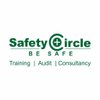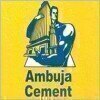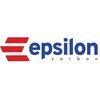Safety Officer
100+ Safety Officer Interview Questions and Answers for Freshers

Asked in Expertise Contracting Company

Q. What are the hazards in a confined space?
Hazardous conditions in confined spaces pose risks to workers' health and safety.
Lack of oxygen or presence of toxic gases
Fire and explosion hazards
Engulfment or entrapment
Physical hazards like falling objects or limited mobility
Temperature extremes or poor ventilation
Chemical exposure or hazardous substances
Electrical hazards
Structural collapse or unstable conditions

Asked in Maruti Suzuki

Q. Give me some examples of confined spaces.
Confined spaces are areas that are not designed for continuous occupancy and have limited entry and exit points.
Tanks
Silos
Vats
Pipelines
Tunnels
Sewers
Storage bins
Boilers
Underground vaults
Crawl spaces

Asked in ASK-EHS Engineering & Consultants

Q. What is a work permit?
A work permit is a document that authorizes a person to perform a specific job or task in a designated area.
Work permits are used to ensure that work is carried out safely and in compliance with regulations.
They are typically issued by a supervisor or manager and must be obtained before work can begin.
Examples of work permits include hot work permits, confined space entry permits, and excavation permits.
The permit will outline the specific job or task to be performed, the loc...read more

Asked in Safety Circle

Q. Name any five sections as per the 1948 Factories Act.
The 1948 Factories Act has 5 sections that cover various aspects of factory safety.
Section 6: Health and safety of workers
Section 7: Cleanliness and disposal of wastes
Section 11: Fencing of machinery
Section 21: Welfare facilities for workers
Section 41: Power of inspectors to take samples and examine workers

Asked in Britannia

Q. What is hazard analysis?
Hazard analysis is the process of identifying potential hazards and evaluating their risks to prevent accidents or injuries.
Identify potential hazards in the workplace or environment
Evaluate the risks associated with each hazard
Develop strategies to prevent accidents or injuries
Implement controls to mitigate the risks
Regularly review and update hazard analysis
Examples: Job Hazard Analysis (JHA), Hazard and Operability Study (HAZOP), Failure Mode and Effects Analysis (FMEA)

Asked in Tata Power Solar

Q. Can you describe a situation where you identified a safety hazard and implemented corrective action?
Identified a safety hazard in the workplace and implemented corrective actions to ensure employee safety and compliance.
Conducted a safety audit and discovered that several fire exits were blocked by equipment, posing a serious hazard during emergencies.
Implemented corrective action by relocating the equipment and clearly marking fire exit routes with visible signage.
Organized a training session for employees on the importance of keeping exits clear and conducting regular saf...read more
Safety Officer Jobs




Asked in Tata Power Solar

Q. How do you stay current with changing safety regulations and industry best practices?
I stay updated on safety regulations through continuous education, networking, and utilizing various resources and tools.
Professional Development: I regularly attend workshops and seminars related to safety regulations, such as OSHA training sessions.
Industry Publications: I subscribe to safety journals and newsletters, like the Journal of Safety Research, to keep abreast of new findings and regulations.
Networking: I engage with other safety professionals through organization...read more
Asked in Sai Tecnomec

Q. How do you check oxygen levels in a confined space?
To check oxygen in a confined space, use a portable gas detector or an oxygen meter.
Use a portable gas detector that can measure oxygen levels in the air.
Ensure the gas detector is calibrated and functioning properly before use.
Place the gas detector in different areas of the confined space to get accurate readings.
Monitor the oxygen levels continuously during the work in the confined space.
If oxygen levels are below the safe threshold, take necessary precautions and provide ...read more
Share interview questions and help millions of jobseekers 🌟


Asked in Tata Projects

Q. How would you use a grinder coupler?
Grinder coupler is used to connect the grinder to the power source.
Ensure the coupler is compatible with the grinder and power source
Inspect the coupler for any damage before use
Securely attach the coupler to the grinder and power source
Follow proper lockout/tagout procedures when connecting or disconnecting the coupler
Examples: Using a coupler to connect a grinder to a generator on a construction site
Using a coupler to connect a grinder to a power outlet in a workshop
Asked in Sai Tecnomec

Q. What is a precaution for confined spaces?
A precaution of confidence space is a safety measure taken to ensure the security and privacy of sensitive information.
Confidence space refers to an area or environment where confidential or classified information is discussed or stored.
Precautions may include physical security measures such as restricted access, surveillance cameras, and secure storage facilities.
Confidentiality agreements and non-disclosure agreements may be required for individuals accessing the confidence...read more
Asked in V.Sathyamoorthy & Co

Q. Which acts are used in the construction field in India?
The acts used in the construction field in India include the Building and Other Construction Workers (Regulation of Employment and Conditions of Service) Act, 1996 and the Factories Act, 1948.
Building and Other Construction Workers (Regulation of Employment and Conditions of Service) Act, 1996
Factories Act, 1948
Asked in Jodhani Papers

Q. What are the standard procedures for a fire hydrant system?
Standard following for fire hydrant system includes regular inspections, proper maintenance, and clear access.
Regular inspections should be conducted to ensure the hydrant system is in working order.
Proper maintenance should be performed to keep the system functional and ready for use.
Clear access to fire hydrants should be maintained to ensure firefighters can easily locate and access them during emergencies.

Asked in Expertise Contracting Company

Q. What is a Job Safety Analysis (JSA), and what is it used for?
JSA stands for Job Safety Analysis. It is a systematic process used to identify and mitigate potential hazards in a specific job or task.
JSA is used to break down a job or task into individual steps and identify potential hazards associated with each step.
It involves observing the job being performed, identifying potential hazards, and determining the appropriate control measures to prevent accidents or injuries.
JSA helps in creating safe work procedures and training material...read more

Asked in Ambuja Cements

Q. What is the meaning of center of gravity?
The center of gravity is the point where the entire weight of an object can be considered to act.
Center of gravity is the average location of the weight distribution of an object.
It is the point where the object is perfectly balanced in all directions.
The center of gravity affects the stability and balance of an object.
For symmetrical objects, the center of gravity is usually at the geometric center.
For irregularly shaped objects, the center of gravity may be located at a dif...read more
Asked in Shivom Minerals

Q. What is the importance of the environment in health and safety?
Environment plays a crucial role in health and safety by influencing exposure to hazards and determining the effectiveness of safety measures.
The environment can directly impact the presence and severity of hazards in the workplace.
Proper ventilation and air quality are essential for preventing respiratory issues.
Temperature control is important to prevent heat stress or hypothermia.
Lighting levels can affect visibility and reduce the risk of accidents.
The layout and design o...read more

Asked in Expertise Contracting Company

Q. What is risk assessment?
Risk assessment is the process of identifying potential hazards and evaluating the likelihood and severity of harm that could result.
Identify potential hazards
Evaluate likelihood and severity of harm
Determine risk level
Implement measures to control or mitigate risks
Regularly review and update risk assessments
Examples: workplace risk assessments, environmental risk assessments

Asked in Ambuja Cements

Q. Why should we follow the H&S management system in the workplace?
Following a H&S management system at the workplace is crucial for ensuring the safety and well-being of employees.
Compliance with H&S management system reduces the risk of accidents and injuries.
It helps in creating a safe work environment and promotes a culture of safety.
Following H&S management system improves employee morale and productivity.
It ensures legal compliance and avoids penalties or fines.
Implementing H&S management system demonstrates commitment to employee welf...read more

Asked in Tata Power Solar

Q. How do you conduct a risk assessment and prioritize hazards?
Conducting a risk assessment involves identifying hazards, evaluating risks, and prioritizing them for effective management.
Identify Hazards: Conduct site inspections and review incident reports to identify potential hazards, such as slippery floors or exposed wiring.
Evaluate Risks: Assess the likelihood and severity of each hazard. For example, a chemical spill may have a high likelihood and severe consequences.
Prioritize Hazards: Rank hazards based on their risk level. High...read more

Asked in Tata Power Solar

Q. What are the key elements of a safety management system?
A safety management system ensures workplace safety through structured processes, policies, and continuous improvement.
Policy Development: Establishing a clear safety policy that outlines the organization's commitment to safety, such as a zero-accident goal.
Risk Assessment: Identifying and evaluating potential hazards in the workplace, like conducting regular safety audits to spot risks.
Training and Education: Providing ongoing safety training for employees, such as first aid...read more

Asked in Pravin Electricals

Q. What's safety precautions in electrical work. And what are the hazard
Safety precautions in electrical work include proper grounding, use of personal protective equipment, and lockout/tagout procedures.
Ensure proper grounding of electrical equipment and tools
Use personal protective equipment such as gloves, safety glasses, and insulated tools
Follow lockout/tagout procedures to prevent accidental energization
Identify and label electrical hazards such as exposed wires and damaged equipment
Provide adequate training to workers on electrical safety ...read more

Asked in Safety Circle

Q. How do you identify hazards during a risk assessment?
Hazards can be found in risk assessment by identifying potential sources of harm and evaluating the likelihood and severity of their occurrence.
Identify potential sources of harm such as equipment, materials, processes, and human factors
Evaluate the likelihood of harm occurring by considering the frequency and duration of exposure to the hazard
Assess the severity of harm by considering the potential consequences of exposure to the hazard
Use a risk matrix to prioritize hazards...read more

Asked in Epsilon Carbon

Q. What are the responsibilities of a safety officer?
Safety officer is responsible for ensuring safety measures are implemented and followed in the workplace.
Develop and implement safety policies and procedures
Conduct regular safety inspections and audits
Train employees on safety procedures and protocols
Investigate accidents and incidents and provide recommendations for improvement
Ensure compliance with local, state, and federal safety regulations
Maintain safety records and reports
Collaborate with management to create a culture...read more
Asked in Pci Wires

Q. What is hazard control method ? How to hazards.
Hazard control methods are strategies used to minimize or eliminate workplace hazards.
Identify hazards through risk assessments and inspections.
Implement engineering controls to physically eliminate or reduce hazards.
Use administrative controls such as training, procedures, and signage.
Provide personal protective equipment (PPE) to protect workers.
Regularly monitor and evaluate the effectiveness of hazard control measures.
Examples: installing machine guards, implementing safe...read more

Asked in L&T Construction

Q. What is a hazard?
A hazard is a potential source of harm or danger that can cause injury, illness, or damage to property.
A hazard is any condition, substance, or activity that has the potential to cause harm.
Hazards can be physical, chemical, biological, ergonomic, or psychosocial in nature.
Examples of hazards include slippery floors, toxic chemicals, infectious diseases, repetitive motion injuries, and workplace stress.
Identifying and assessing hazards is crucial for implementing effective sa...read more

Asked in L&T Construction

Q. What is safety?
Safety is the state of being protected from harm, danger, or risk.
Safety refers to the measures taken to prevent accidents, injuries, or illnesses.
It involves identifying and assessing potential hazards and implementing controls to minimize or eliminate risks.
Safety includes promoting awareness, training, and adherence to safety protocols and procedures.
Examples of safety measures include wearing personal protective equipment, maintaining equipment and machinery, implementing...read more
Asked in Sai Tecnomec

Q. What precautions should be taken when working at extreme heights?
A precaution of super height is to ensure proper fall protection measures are in place.
Implementing guardrails or safety nets to prevent falls
Using personal protective equipment like harnesses and lanyards
Regular inspection and maintenance of equipment and structures
Providing proper training and education on working at heights
Establishing emergency response procedures in case of accidents

Asked in Jindal Steel and Power

Q. How do you ensure the safety of your company and its workers?
To ensure the safety of the company and workers, implement comprehensive safety protocols, provide regular training, conduct thorough risk assessments, and promote a culture of safety.
Implement comprehensive safety protocols and procedures to address potential hazards and risks.
Provide regular safety training to employees to ensure they are aware of safety procedures and practices.
Conduct thorough risk assessments to identify potential hazards and implement appropriate contro...read more
Asked in Pci Wires

Q. Procedure of CAPA(corretive action and preventive action) , Roll of safety officer during fetal.
CAPA is a procedure for identifying and addressing corrective and preventive actions. Safety officer plays a crucial role during fetal.
CAPA involves identifying the root cause of an issue, implementing corrective actions, and taking preventive measures to avoid recurrence.
Safety officer ensures that CAPA procedures are followed and documented accurately.
They investigate incidents, accidents, and near misses to determine the need for CAPA.
Safety officer collaborates with relev...read more

Asked in FM LOGISTIC

Q. Have you conducted a risk assessment before?
Yes, I have conducted risk assessments before.
I have experience in identifying potential hazards and evaluating risks.
I have conducted risk assessments to ensure compliance with safety regulations.
I have used various tools and techniques such as checklists, inspections, and interviews to assess risks.
I have documented findings and recommended control measures to mitigate risks.
I have collaborated with teams to implement risk control measures and monitor their effectiveness.

Asked in Expertise Contracting Company

Q. Hazardous job in confined space
Working in a confined space poses significant hazards that require proper safety measures.
Identify and assess potential hazards in the confined space
Implement proper ventilation and air quality monitoring
Ensure proper training and equipment for workers
Establish effective communication and emergency procedures
Regularly inspect and maintain the confined space
Examples: working in underground tunnels, storage tanks, or sewers
Interview Questions of Similar Designations
Interview Experiences of Popular Companies








Reviews
Interviews
Salaries
Users
















